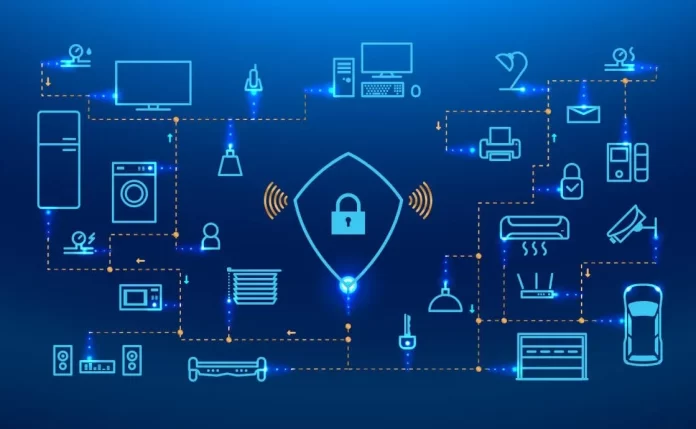In the constantly shifting terrain of our digital era, where our existence is intricately entwined with the intricate threads of technology, safeguarding our digital lives is more evident than ever. As our reliance on digital platforms expands, the imperative to shield sensitive information from cyber threats becomes increasingly crucial. This piece delves into the intricate landscape of challenges in the realm of cybersecurity, investigating the ever-changing nature of cyber threats, prevalent issues encountered by both individuals and organizations, technological patterns, regulatory dimensions, the significance of global cooperation, and the crucial influence of human factors.
Table of Contents
Evolution of Cyber Threats
Historical Perspective on Cyber Threats
The journey of cybersecurity challenges can be traced back to the internet’s nascent days when early threats were often simplistic and more focused on disruption than malicious intent. Fast forward to today, and cyber threats have evolved into sophisticated and targeted attacks that transcend geographical boundaries.
Shift from Traditional to Digital Threats
Traditional threats have morphed into digital adversaries, exploiting vulnerabilities in interconnected systems. The advent of interconnected devices and the Internet of Things (IoT) has widened the attack surface, presenting new challenges in securing an increasingly complex digital ecosystem.
Emergence of Sophisticated Cyber Attacks
In the contemporary cybersecurity landscape, Advanced Persistent Threats (APTs) clearly indicate the intricacy inherent in present-day cyber offensives. These protracted and specifically aimed attacks, frequently supported by governmental entities or well-coordinated cybercrime syndicates, emphasize the imperative requirement for resilient cybersecurity protocols.
Common Cybersecurity Challenges
Advanced Persistent Threats (APTs)
APTs represent a persistent and targeted cyber attack, penetrating networks over time. Notable instances, such as the SolarWinds hack, highlight the gravity of these threats, emphasizing the need for continuous vigilance and proactive defense mechanisms.
Ransomware
The surge in ransomware attacks has sent shockwaves through both individuals and organizations. Whether encrypting personal files or paralyzing critical infrastructure, ransomware presents a formidable challenge. Amid this digital threat landscape, finding a reliable solution becomes as crucial as locating a trustworthy Crypto ATM Near Me.
Phishing and Social Engineering
Cybercriminals increasingly rely on psychological manipulation through phishing and social engineering tactics. As users become more aware, attackers adapt, necessitating ongoing education and the development of advanced detection mechanisms.
Insider Threats
Insider threats, whether intentional or unintentional, remain a constant concern. Mitigating these risks involves a combination of technological solutions and cultivating a culture of security awareness within organizations.
Technological Trends and Challenges
Internet of Things (IoT) Security
The proliferation of IoT devices introduces new vulnerabilities. Securing these interconnected devices is crucial to prevent them from becoming entry points for cyber attacks. Manufacturers and users must collaborate to implement robust security measures.
Cloud Security
Cloud services offer immense benefits but also present unique security challenges. Organizations must carefully navigate the complexities of cloud security, ensuring their data’s confidentiality, integrity, and availability.
Artificial Intelligence (AI) in Cybersecurity
AI is a double-edged sword in cybersecurity. While it enhances threat detection capabilities, it also introduces risks such as adversarial attacks. Striking the right balance and refining AI models are imperative for effective cybersecurity.
Regulatory and Compliance Challenges
The landscape of cybersecurity regulations is complex and ever-changing. Navigating compliance challenges is a crucial aspect for businesses. Non-compliance exposes organizations to cyber threats and legal consequences, emphasizing the importance of staying abreast of regulatory requirements.
International Collaboration in Cybersecurity
In an interconnected world, cyber threats know no borders. International collaboration is vital for sharing threat intelligence, coordinating responses, and developing unified strategies. Successful examples of collaborative efforts, such as the Budapest Convention, underscore the importance of a united front against cybercrime.
The Human Factor
Employee Training and Awareness
Human error remains a significant factor in cybersecurity incidents. Comprehensive training programs that focus on creating a cybersecurity-aware workforce are essential. Employees should be equipped to identify and respond to potential threats effectively.
Role of Human Error in Cybersecurity Incidents
Understanding the role of human error is crucial in devising strategies to minimize its impact. From accidental data breaches to falling victim to social engineering tactics, addressing the human factor is an ongoing challenge in cybersecurity.
Strategies for Enhancing the Human Element in Cybersecurity
Encouraging a culture of cybersecurity awareness and providing resources for employees to stay informed are essential strategies. Additionally, organizations should foster an environment where reporting potential security concerns is encouraged rather than penalized.
Future Outlook
Emerging Technologies and Their Impact on Cybersecurity
The future promises even more advanced technologies, such as quantum computing and 5G networks, which will undoubtedly reshape cybersecurity. Adapting to these changes and proactively addressing emerging threats will be critical.
Anticipated Challenges in the Future
As technology advances, so do the tactics of cyber adversaries. Future challenges include AI-driven cyber attacks, novel forms of ransomware, and the potential exploitation of emerging technologies. Staying ahead of these challenges requires continuous innovation and collaboration.
Potential Solutions and Innovations
Crafting robust cybersecurity solutions and nurturing an environment of creativity are pivotal in tackling forthcoming challenges. Collaborative endeavors between public and private entities, dedicating resources to research and development, and defining worldwide benchmarks for cybersecurity form integral facets of the path ahead.
Conclusion
In conclusion, the cybersecurity challenges in the digital age are multifaceted and require a comprehensive and dynamic approach. From understanding the evolution of cyber threats to embracing technological innovations and fostering international collaboration, addressing these challenges demands a collective effort. As we navigate the complexities of an interconnected world, a crypto ATM near me serves as a reminder that cybersecurity is about securing data and safeguarding the means through which we navigate our digital lives. Continuous education, proactive defense mechanisms, and a global commitment to cybersecurity are the pillars of a secure digital future.





